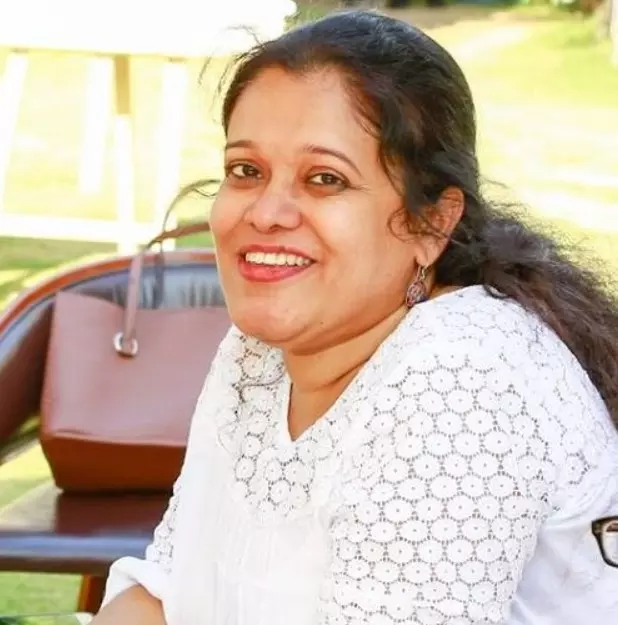Live
- Why Christmas is Celebrated on December 25: The Link to Roman Festivals
- Tributes paid to G Venkataswamy (Kaka)
- Amit Shah should quit; demand MP, MLA
- Hike in support price brings cheer to coconut farmers
- Apple's Face ID Smart Doorbell Could Unlock Doors by Late 2025
- Amit Shah must tender apology
- Govt’s focus on rural and tribal health: Minister Damodar
- Ramanujan’s birth anniversary celebrated
- Former Chief Minister Y.S. Jagan's Four-Day Tour of Kadapa District Starting on 24th December
- Speeds up brain aging in women
Just In

It was in January on the sidelines of the Jaipur Literature Festival that this interview happened. The vivacious Alka Pande, scholar, academician, art historian and curator in her western trousers teamed with a vibrantly Indian silk coat was unapologetic of her views and unpretentious in her expression…just like her books.
It was in January on the sidelines of the Jaipur Literature Festival that this interview happened. The vivacious Alka Pande, scholar, academician, art historian and curator in her western trousers teamed with a vibrantly Indian silk coat was unapologetic of her views and unpretentious in her expression…just like her books.
“At my age, I couldn’t care less. There was a time I was trying to please everyone and ended up pleasing none,” Dr Alka Pande passes on a nugget of her wisdom. Her books cover a vast spectrum of topics, yet draw inspiration from the rich cultural heritage of India.
‘Shringara – The Many Faces of Indian Beauty’ in which she discusses aesthetics, the rasas that manifest in various forms – poetry, painting, architecture, visual arts; ‘Mukhwas – Indian Food Through Ages’, ‘Divine Gesture – The Magnificence of Mewar Spirituality’; ‘Panchtattvas – The Road Ahead’ – a result of a month-long photography exhibition on sustainable development with contributions from eminent people in the field – Dr Ajay Mathur, Amba Jamir, Madhav Gadgil, Mike Pandey and Sunita Narain; ‘Kamasutra – Quest for Love’ – a relook at the iconic text of Indian erotic art; other books on art, music, theatre, dance, poetry, that she edits and curates – her publications are as varied as the versatile personality.
And she credits her upbringing, and exposure to knowledge of history, culture, fine arts and aesthetics of Indian heritage, education and years spent in the dissemination of that knowledge that gives her the wide worldview.
“My mother had a terrible effect on my confidence. I was beautiful and svelte and she would always brush it off giving credit to the age and push me to work and study. And that has kept me in good stead,” she shares.
In addition to studying art history, she learnt Kuchipudi dance from Yamini Krishnamurthy for five years and music. “Today you have kids going to play soccer and swim; we had to learn music, Hindi. That gives a holistic approach to my writing…art cannot be perceived in isolation,” she says.
“People don’t really want to read about Indian aesthetics and art. If you look at developed nations, every country has its own cultural centre. Art is soft power. Exchanges done through art are more long-term than diplomatic; they are beyond political treatises.
Unfortunately, in India like in Britain the government body ICCR does the job. It will be like public diplomacy. Further, India is associated with mediocrity. You should know how to get around the government and you get scholarships, and go to countries. And it’s more to do with the jury. They must have integrity,” she opines.
On her writing she says, “I apply experience and thought to it. I write about Indic wisdom as a contemporary person. When I looked at Arthanareeswar, I saw synchronism between shaivaites and devi bhakts, brought androgyny to the present, I have looked at transgender, transsexual, concept of same-sex, looked at the inclusion of homosexuality in ancient texts, which is there even in Kamasutra.”
“It’s very important to write as a contemporary person. I write about Indic wisdom through the contemporary lens; if I am just going to talk of heliographing the past, then it will just be a relic of the past and should stay in the museum. What I learnt is that vibrancy is important in everything; this you get by engaging and interacting.” And, this principle she applies in teaching too.
“I taught at a university for 19 years, and I did far thoughtful, conceptual work with more gravitas. Otherwise teaching art history for so many years would have been boring. When I came back, I started unpacking my research and making it more available,” she shares.
And, adds, “I enjoy ‘Navarasas’ of life. Why should I write only on Pahadi Masters, and split hair over it; I would rather write on the sartorial splendour of Wajid Ali Shah, so I bring in my scholarship, bring in the idea of sartorial, I bring the cultural facet – Life is all about exploring.”
Unpacking gravitas is something I enjoy!

© 2024 Hyderabad Media House Limited/The Hans India. All rights reserved. Powered by hocalwire.com







